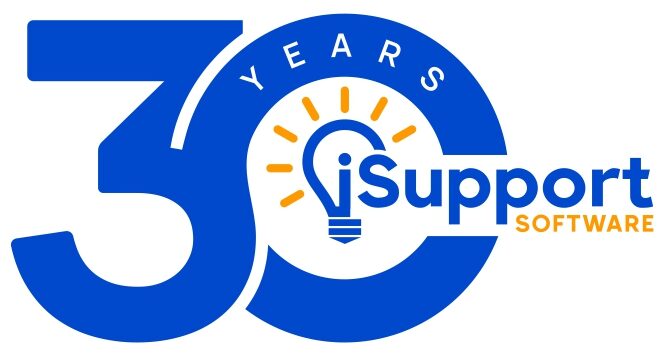The underlying business need for customer self-support is simple: any way you can support your customer that doesn’t involve a phone call is cheaper. If I can use email, discussion boards, knowledge bases, chat, Twitter, Facebook, LinkedIn, etc., it will be less expensive than if I have to pick up a telephone. Providing multiple support channels also increases the reach and productivity of your support organization. Different people like to communicate in different ways. A good support rep can handle two or three chats simultaneously whereas it is almost impossible to support more than one person at a time on the phone.
A couple years ago we developed a new end user self-support portal and called it the Social Client. You need coordinated communications between multiple parties; to me that is social. The response was interesting; the first year we got a lot of resistance just because it was called “social”, and companies didn’t allow social networking products behind their firewall. We did add some integration with Twitter and Facebook, but the reality is that our Social Client was all about connecting people. Once we could explain that we were not trying to force Facebook into corporations, people begin to understand and embrace our new technology. Today most of our competitors call their end user support tools social. I’m very proud that in 2013, just like in 1997, we continue to lead our industry with new and innovative ideas.
So what do my other experts think about customer self-service? I think you might be surprised that they don’t necessarily agree with each other…
Ryan Terrell, VP Sales and Sleep-Deprived Father
I’ve talked to hundreds of clients over the years about implementing self-service for their internal IT help desk and how they have been successful or ultimately failed. As simple as the concept is for most of us to understand, it can often be tricky to implement. There are a lot of things to consider like your company culture, demographic, and what they have been accustomed to in the past. But the one thing missing from many rollout plans is a marketing piece. In most cases IT people are great at planning; it comes with the territory. Marketing and sales, on the other hand, are not usually associated with the support department. In my experience, however, I’ve found them to be essential elements to successfully implementing customer self-service.
I won’t delve too far into the structural planning side. How and what is going to be offered will differ greatly from one organization to another. The nuts and bolts of building a self-service portal is fairly straight forward to put together, but it takes time, documentation, and a bit of whiteboard artistry up front.
So let’s say you stayed true to the “keep it simple stupid” mantra, you’ve built an intuitive site full of well thought-out automated services and seamlessly matched it all to your corporate brand. Now what? How are you going to get people to use it instead of calling the help line? Well first let’s talk about what I’ve seen fail the most: mandates. Building your self-service portal and sending out the company memo stating that from here on to receive support you must use this new tool we have created = crash, burn, fail. It rarely works. Every support team that I have seen trying to “promote” the new self-service page with a mandate followed up with increasingly stern reminders has not been successful. When I’ve followed up with clients that took this approach I’ve often found a new contact that tells me that the old team tried self-service but it just never worked.
So what has worked? The clients that I have seen most successfully promote a new support model did exactly that – they promoted it. In the planning stage they went to upper management and sold the idea of the new self-service initiative. They asked for their involvement in making the new site part of everyone’s regular work week. Some of them didn’t start with the support aspect at all. One success story started with the service team soliciting feedback on what park should host the company picnic. Instead of creating an email chain they offered a link where employees could cast their vote. Management participated and followed up with messages such as, “So far X location is leading with five days left to vote. Don’t miss out on your chance to be heard.” The following weeks were staged with other topics where employee feedback was valued. Discussion forums were created, voting on topics was encouraged, and other resources were promoted. Eventually most of the organization had logged on and gotten involved in some way. They didn’t just tell people what to do; they showed them how the tool had value to them. They gave them a reason to want to bookmark and return to the site. The fact that additional resources were continually added just made it even more valuable over time.
In my experience the best way to lead people to adopt a new way of doing something isn’t to push them in that direction, but pull them in. Give them a reason, not a mandate. Think about why sites like Yelp are so popular, and why people spend the time to post thousands of comments under news articles and debate each other on Facebook. People like the social interaction, they love to be heard, and they see a value in open conversations. Adding that as an element to your service portal gives you a much better chance of success.
When you are planning on launching a customer self-service site, take the time to include an ongoing marketing element. Involve management in finding ways that regularly entice your customers to use the tool rather than just offering a place to go when they have a problem. Report back to the community on how and why people are using the site. The successful self-service projects I’ve seen have always included a plan to sell the idea and continually make it interesting as time went on.
John Stimson, VP Engineering and Not Allowed to Touch the Light Bulbs
Unless a support group possesses magical powers (and some do I’m sure), the rest of us can’t fix an issue that we don’t know about. Getting that issue reported, and in front of people who can do something to help, is one of the most important parts of support. Sadly, it’s usually the unreported problems that are the underlying reasons for dissatisfaction with a support group. (Support hasn’t even had a chance to know about it.) The more hurdles that are placed in front of someone being able to report an issue, the far less likely it will happen.
Provide ways for folks to solve things themselves, and when that isn’t practical move with the evolving technology, adapting to the established, common, and familiar methods of reporting issues. Facebook and Twitter are the newer ones as older methods such as bulletin board systems and three-part paper forms fall back into memory. So offer as many inbound routes as possible and make it easy to report, so you can catch the most issues.
Lisa Kimery, Documentation Czar and PDX Marathon Finisher
It is important to analyze who will be using your customer self-service site and give options for each type of user, but the key component is the search option. It always frustrates me when I am on a web site that doesn’t have one.
Our help desk software offers so much flexibility–you can create a Social Client portal with access to many different types of communication channels and information for advanced users and a simple Social Client portal with just a few icons for less advanced users–but consistent use of the powerful Assist Bar search feature would help everyone. It’s a place to start, and the results can be tailored to each type of user.
Lisa Kienle, Cleanup Batter and General Genius
I have found that organizations have a love/hate relationship with their end users. They want to restrict the self-service portal to just two buttons, Submit and View, and expect the calls to decrease. They wonder why this doesn’t work and why the call volume is consistently up. They feel it is because their end users are not smart enough to figure out how to navigate in a portal.
The goal is to reduce calls to the service desk…but even more important, take the ‘hate’ out of the relationship between reps and end users.
Darren Grigg, Product Manager and Master of the 7 Hour 59 Minute Work Day
One of the most important things to consider if you want your rollout of a customer self-service site to be successful is to keep it simple. If your customers have become accustomed to just picking up the phone and calling a technician or sending an email, and you roll out a self-service portal that offers dozens of options and isn’t easily understood, they aren’t going to use it. Focus on ways to eliminate your most common how-to calls by publishing a few FAQs or creating an easy-to-use self-service guide.


